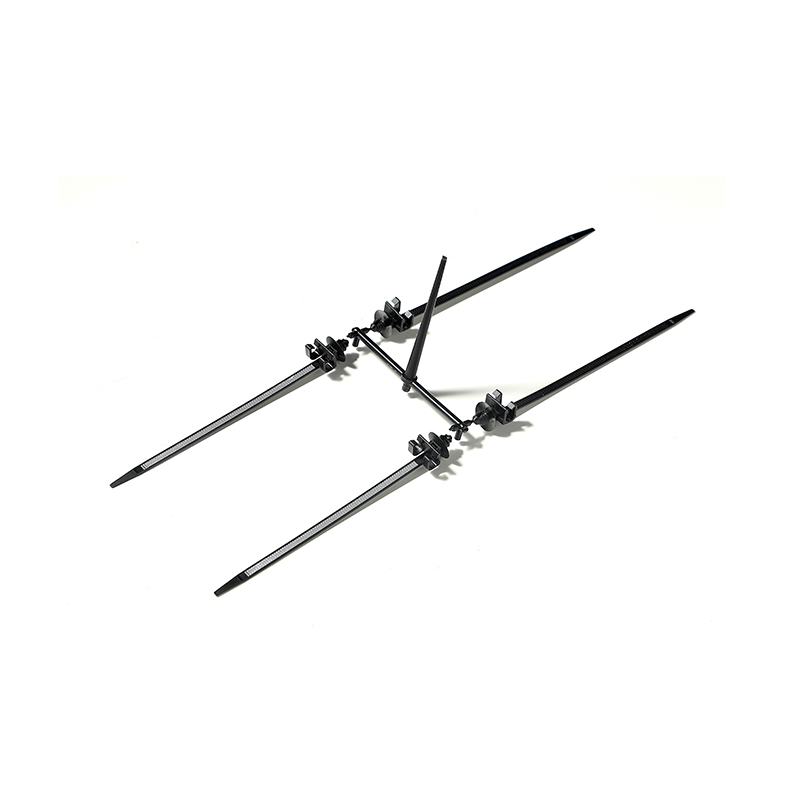 2025.08.01
2025.08.01
 News
News
Threaded head cable ties have become vital components in many industries, providing a secure and reliable method for bundling cables, wires, and various objects. The Threaded head cable ties molds used to produce these specialized cable ties have evolved significantly, reflecting advances in manufacturing technology, material science, and market demands.

The initial molds for threaded head cable ties were relatively straightforward, focusing on producing a standard design that met basic functional requirements. These early molds were typically made from conventional tool steels and featured single cavities that shaped the nylon or other polymer materials into the cable tie form, including the threaded head.
The threading in the head provided a ratchet mechanism allowing the tie to lock securely. However, early mold designs faced challenges in achieving consistent thread detail and smooth edges, which affected the tie's locking reliability and ease of use. Cooling systems and mold machining technology were basic, which led to longer cycle times and occasional defects such as warping or incomplete threads.
As demand for high-quality, reliable cable ties grew, manufacturers began adopting improved materials and machining techniques for mold construction.
Tool Steel Upgrades: Modern molds are commonly made from hardened steel grades like P20 or H13. These steels offer wear resistance and thermal stability, ensuring the molds withstand long production runs without losing precision.
High-Precision CNC Machining: Computer Numerical Control (CNC) machining has enabled highly accurate mold cavities. This precision is crucial for producing sharp and well-defined thread profiles in the cable tie heads, enhancing the locking mechanism's effectiveness.
Surface Treatments: Advanced polishing and coating techniques reduce friction inside the mold, improve nylon flow, and help produce cable ties with smooth surfaces and consistent thread quality.
These improvements have significantly increased product reliability and mold longevity.
Efficient cooling is vital for maintaining cycle times and part quality. Threaded head cable tie molds have seen innovations in cooling design.
Conformal Cooling Channels: Unlike traditional straight channels, conformal cooling paths are designed to closely follow the mold cavity's shape. This provides uniform cooling around the threaded head area, reducing internal stresses and preventing defects such as warping.
Optimized Temperature Control: Enhanced temperature management reduces cycle times and ensures the nylon polymer solidifies uniformly, consistent thread formation and overall part quality.
Improved cooling translates into faster production without sacrificing the precision of the molded threads.
To meet increasing production demands and offer flexibility, the design of threaded head cable tie molds has evolved.
Multi-Cavity Molds: These molds produce several identical cable ties in one injection cycle, greatly increasing output and reducing cost per unit.
Modular Mold Components: Interchangeable mold inserts and cores allow manufacturers to switch between different tie sizes or thread designs quickly without investing in entirely new molds. This modularity supports customization and rapid response to market needs.
Such developments enhance manufacturing efficiency and adaptability.
Market trends have driven the need for customized cable ties with various thread profiles, locking strengths, and material properties.
Complex Thread Profiles: Modern molds can produce intricate threaded heads designed to improve locking performance, reusability, or release mechanisms.
Material Compatibility: Advances in mold design accommodate different polymers, including UV-resistant or flame-retardant nylons used in specialized industries like automotive and aerospace.
Branding and Texturing: Mold cavities may include engraved logos or textures on the cable tie head, adding value through brand differentiation and improved grip.
These capabilities reflect the mold's evolution from simple tooling to versatile manufacturing systems.